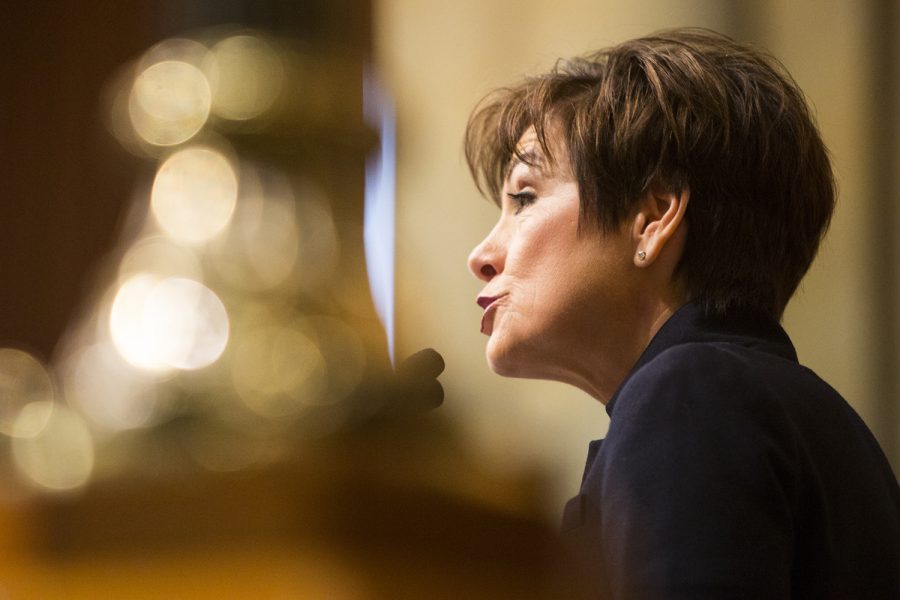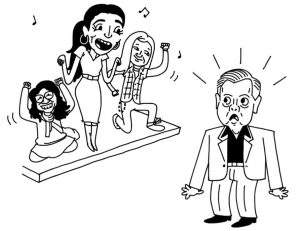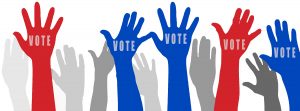Newby: Human trafficking is on the rise
Despite desperate efforts to disband human-trafficking efforts altogether, modern day slavery is on the rise.
Iowa Gov. Kim Reynolds speaks during her first Condition of the State address in the Iowa State Capitol in Des Moines on Tuesday, Jan. 9, 2018.
January 31, 2019
Human trafficking is hidden just below the surface of crowded restaurants, buzzing hotel lobbies, local massage-parlors, and stretches of interstate. Contrary to what a number of people around the world perceive it to be, modern-day slavery does not always look the way they anticipate.
Trafficking doesn’t always take the shape of women in skimpy outfits, striding up and down sidewalks at the edge of downtown; it doesn’t always look like children kidnapped, taken from the warmth of the only home they’ve ever known.
Often, human trafficking appears in the mystery of a missing-persons reports — a runaway who left home at 16 or a 30-something who moved out of state for his dream job, only to vanish weeks later.
Des Moines was named a top 100 massage-related-human-trafficking hub by Polaris, a national anti-human-trafficking organization, in 2016. One reason traffickers flock to Des Moines has to do with the junction of Interstate 35 and Interstate 80.
Easy transportation across state lines allows easy access to different areas of America. And with attractions in Des Moines near I-80 and I-35 — such as the State Fair, 80/35 Festival and Adventureland — it’s easy for traffickers to ply their trade.
And in knowing this, Iowa, along with other states, has fought hard to find and save the enslaved. According to National Conference of State Legislatures, in 2017 alone, 43 states enacted more than 150 bills related to human trafficking. Most of these laws were grounded in growing public awareness, engaging in prevention, and spreading information on trafficking crimes.
RELATED: UI student travels to Nepal to learn about human trafficking
Just recently, Gov. Kim Reynolds signed a proclamation declaring January as “Slavery and Human Trafficking Prevention and Awareness Month” in the hopes that the month could serve as a springboard in building awareness among the public.
Action plans and anti-human-trafficking initiatives have honed resources and offered events in order to better educate local communities as well as law enforcement on ways they can work together in combating human trafficking. And one of the biggest encouragements: If you see something, anything, say something.
And still, despite the efforts that have been enforced in the last two years to reach and rescue the lost, the United Nations reported a distinct rise in human trafficking just last month. Where previously, children only made up 25 percent of human-trafficking victims, adolescents now account for 30 percent of victims worldwide.
UNODC collected information about 225,000 victims of trafficking detected🌍betw 2003-2016.
Today the Global Report on Trafficking in Persons 2018 will be launched @UN_Vienna w/@YuryFedotov & @Karin_Kneissl @MFA_Austria
Full report: https://t.co/7u4z3kZvrF #EndHumanTrafficking pic.twitter.com/sxaZP3VwuR— UN Office on Drugs & Crime (@UNODC) January 7, 2019
In total, there are 40.3 million people enslaved around the globe — and while attempts are being made every day, only 1 percent of people being trafficked are expected to be reached in time to be rescued.
Trafficking is growing, globally and locally, and it’s imperative we carry on in our efforts as a community by gaining information over what to look for and how to report suspicious activity.
“The harsh reality is dozens of victims are being trafficked in Iowa every day, and most traffickers go undetected and unreported,” Reynolds said during her proclamation. “That’s why we must join together to prevent human trafficking and end this unspeakable crime in our state, nation, and around the world.”






